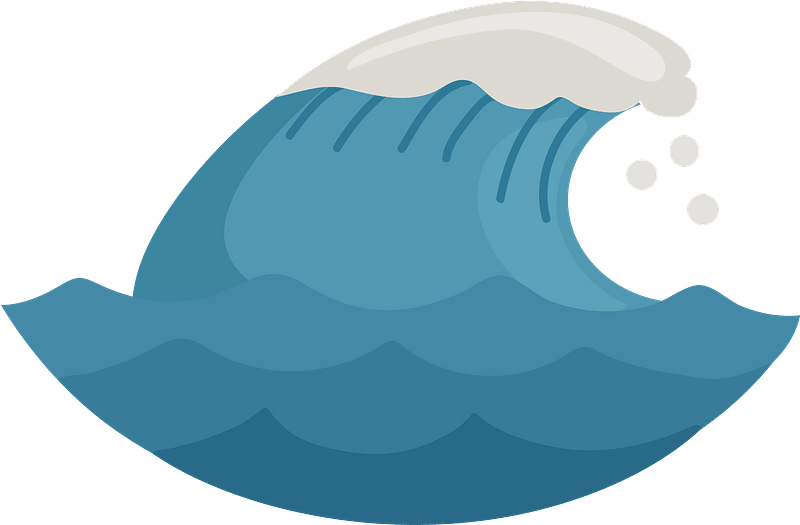swim workouts to lose weight: beginners guide
swim workouts to lose weight: beginners guide
We will provide all the essential information on equipment and exercises for swimming workouts to lose weight for beginners.
Feb. 13, 2023
Swimming workouts for weight loss
Swimming workouts are not all made equal, and your workout routine will ultimately affect your calorie expenditure. There are a lot of more complicated details to it.
In this article, you'll learn the following:
1. How to build an optimal weight loss routine
2. High-intensity workouts vs low-intensity workouts
3. Swim strokes and which burns most calories
4. How to track how many calories you've burnt
If you want to learn how to build an optimal swimming routine, this article is for you.
Let's dive in!
Swimming for weight loss basics
➢ Calories are units of energy. Your body needs energy to function properly, and it gets that energy from the food you eat. So when you eat or drink, your body breaks down the food into nutrients like proteins, fats, and carbohydrates. These nutrients are then used by your cells for processes like growth and repair. Breaking down food and using its nutrients for energy is called digestion or metabolism.
You expand energy constantly throughout the day to get your body moving. And, even when you are resting. Yes, even when you supposedly don't do anything, you still burn calories. That process is called BMR - basal metabolic rate. It's a base rate of the energy that your body needs to keep you pretty much alive.
When you add exercise to your routine, you deplete energy sources more. That's called physical activity energy expenditure.
➢ Fun fact: To lose one pound of fat, you need to expend 3,500 calories above your daily calorie intake.
When you exercise, those calories are burned off from fat and carbohydrate reserves. Just as the number of calories burned depends on your activity level, the relative number of fat and carbs burned varies by activity. Both aerobic and anaerobic exercises burn fat and carbs at different rates.
Aerobic and anaerobic zones for weight loss
When you swim laps, depending on the workout's effort level, your entire body initiates the processes according to the heart rate zone.
Most people know they need aerobic exercise to improve their fitness level and lose weight, but not many people don't understand what aerobic and anaerobic zones are or how to find them.

Aerobic zone and swimming for weight loss
Think about working out in your aerobic zone like that: you should be able to carry on a conversation without too much difficulty. If you can't, you probably work too hard and should back off a bit.
Aerobic swimming is a good choice for recovery swims. In the sports world, we call it active recovery. Low-intensity swims are a great workout to speed up the recovery processes in your body and burn more calories than doing nothing.
Anaerobic zone or high-intensity workout
Swims like that are usually referred to as high-intensity workouts.
When working in an anaerobic zone, you most like be unable to carry on a conversation because your heart rate will be too high, and breathing becomes a challenge.
How do I find my heart rate zone?
There are a few different ways that you can find your heart rate zones while swimming. One way is to use a heart rate monitor.
When working out, pay attention to your heart rate and see how high it gets. Once it gets too high for you to be able to carry on a conversation, that means you have entered your anaerobic zone. Another way to find these zones is by using the talk test, which we discussed briefly. If you can’t hold a conversation while working out, then you have likely entered your anaerobic zone.
Devices for monitoring heart rate
- Tickr fit heart rate monitor from Wahoo - $80Wahoo has been on the market for several years now. It's one of the top producers of high-quality products that have good battery life and is very durable.
Explore > - Fitbit Versa 2 - $100That device is not going to disappoint you with the battery life and the number of insights that it can provide. It keeps track of more data than Wahoo, such as your steps, pace, distance, stress, and all that jazz. All of it is for $100. Can't beat that.
Explore > - Garmin Swim 2 Smartwatch - $250If you have a bigger budget and want a slightly better device, Garmin is for you. It's not as pretty looking as Fitbit, but gives you a lot of great insights about swimming. It tracks your swimming distance, time per distance, and all that good staff. Garmin is suitable for pool swims, and open-water swims in the ocean, lakes, and rivers.
Explore >
Moderate-intensity swim workouts are the key to weight loss
There's a famous stereotype that the aerobic zone is “a sweet spot for fat loss.” This is because when you exercise in that zone, your body can use fat as its primary fuel source to keep you fueled for longer. But aerobic swimming burns fewer calories.
To stay in the aerobic zone, aim for a heart rate between 50% and 70% of your maximum heart rate. For most people, this means keeping your heart rate around 120-140 beats per minute.
Remember, during an aerobic swim, you should be able to carry a conversation with ease.
Anaerobic Zone or HIIT
The anaerobic zone is where things start to get a little more intense. When you exercise in the anaerobic zone, your body will rely more on carbohydrates for energy. Aim for 70% and 90% of your maximum heart rate to stay in that heart rate zone. For most people, this means keeping your heart rate around 140-160 beats per minute.
This is where you won't be able to carry a conversation when swimming.
It is true that aerobic exercise relies upon more energy sources and therefore burns up more fat to provide that extra energy. However, it's important to remember that high-intensity interval training burns more total calories and therefore burns more total fat.
Swimming workouts to lose weight for beginners
4 x length of the swimming pool easy to moderate flutter kick with a kickboard with 20” rest
2 x easy swims of one swimming stroke of choice with 20-30” rest
1 x fast effort of the stroke of your choice with 1’ rest after
1 x easy swim of your choice
2 x easy swims of the different strokes of choice with 20-30” rest
1 x fast effort of the swimming stroke of your choice with 1’ rest after
4 x easy swims of your choice or flutter kick with a kickboard with the rest of your choice
Swimming equipment
- Kickboard - $11Get the cheapest kickboard on the market. That will help you differentiate workouts, rest your upper body, and work your legs.
Explore > - Speedo swim goggles - $15You should probably invest in a pair of swimming goggles if you decide to swim long-term. That will help you to put your face in the water and swim without getting water in your eyes.
Explore > - Basic silicone swim cap - $10If you have long hair, get a swim cap. That's going to make your life so much easier when swimming.
Explore >
Can you lose weight by swimming only?
The short answer: yes, you can. Suppose you build your swimming workout plan right and incorporate different swimming intensities. That will undoubtedly bring significant results to your body composition.
Keep in mind that swimming or any exercise is an addition to your weight loss journey. As we discussed earlier, calories and energy expenditure are the key factors in losing weight. If you eat more calories than you expend, you'll keep on adding those extra pounds. A good saying goes: abs are made in the kitchen. Your diet ultimately determines the decrease in weight.
